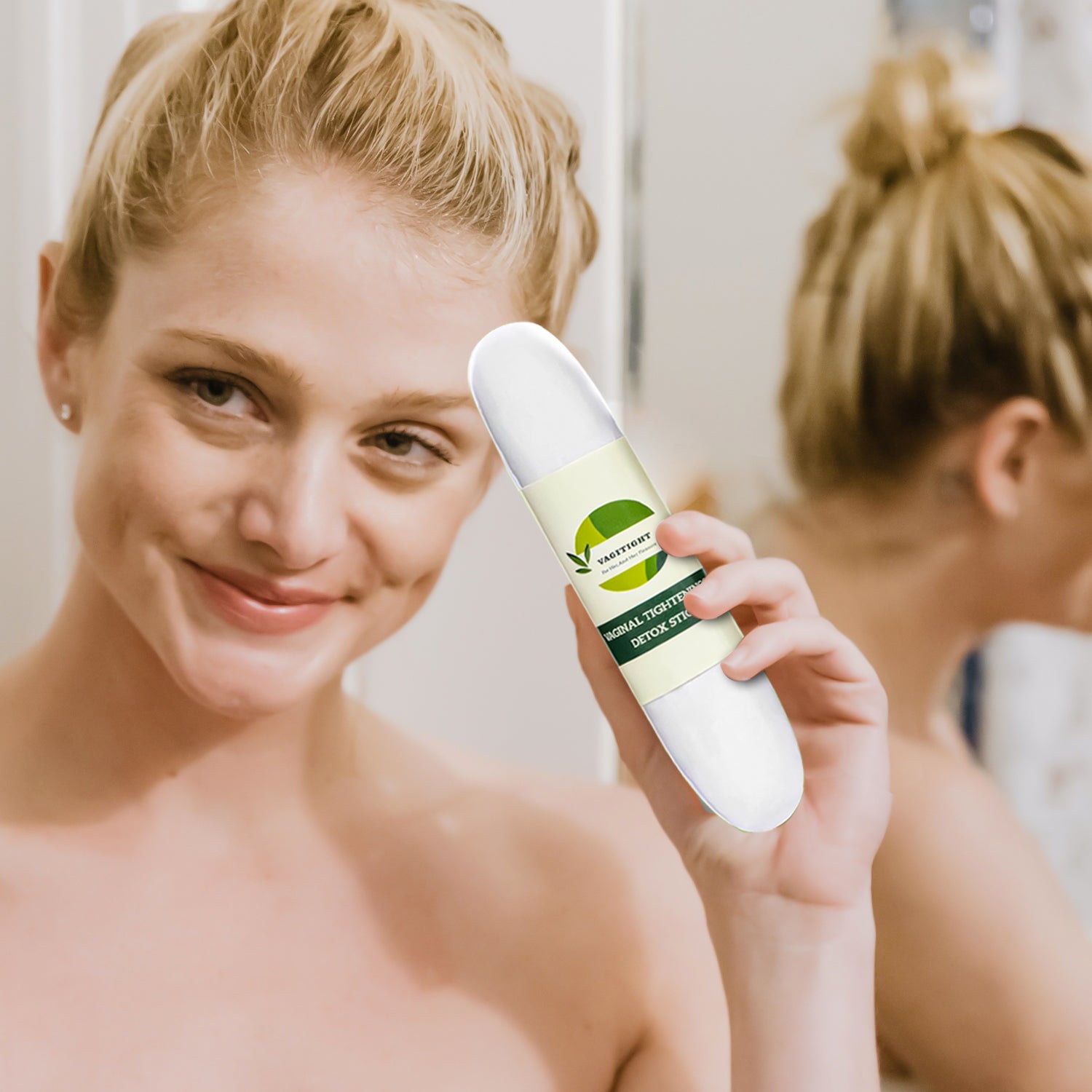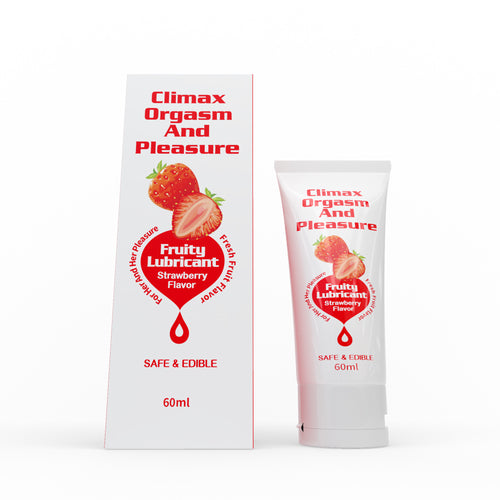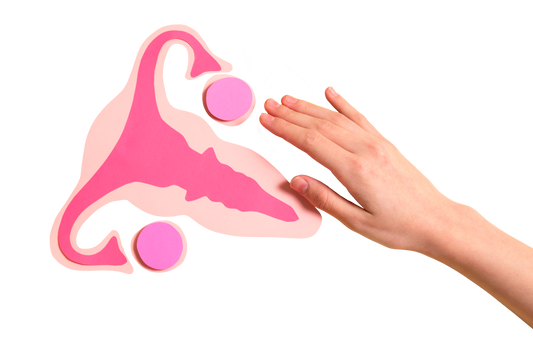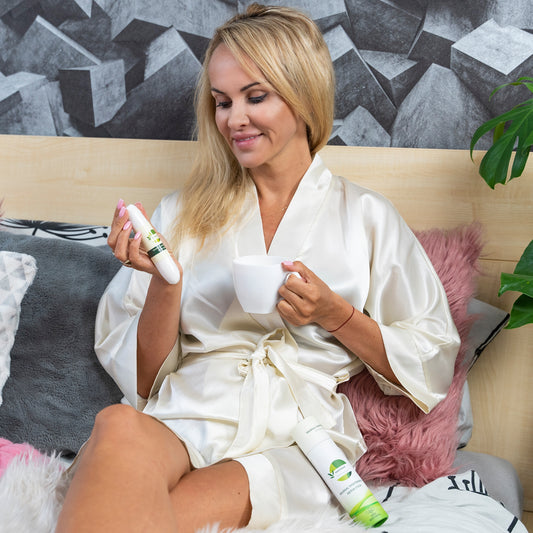In this article, we identify the causes of vaginal loosening and explore vaginal tightening techniques for different age groups. Sit tight and read on to learn more about what can be done to keep your vagina in good shape.

What Causes the Vagina to Loosen
The vagina is inherently elastic and will stretch and contract naturally. However, it may lose some of its elasticity due to various factors.
- During childbirth, the vaginal muscles stretch to allow the baby to pass through. They contract on their own once the baby is delivered but may feel slightly looser than before. After a few days or weeks, the vaginal will feel tight again but may not always return to its original shape.
- Ageing. As you age, you are bound to experience hormonal changes that affect the production of estrogen and collagen. Reduced levels of these hormones result in the loss of vaginal tissue elasticity and thinning of the vaginal lining. This gives you a feeling of vaginal laxity.
- Sexual Activity. When you are sexually aroused, your vagina naturally stretches to allow comfortable penetration. It returns to its resting state after intercourse. However, the intensity and frequency of these activities, along with the size of your partner, may cause the vagina to loosen.
- Pelvic Floor Disorders. Stress urinary incontinence, prolapse, and other pelvic floor disorders weaken the pelvic floor muscles. When they weaken, they struggle to keep pelvic organs in their ideal positions. They also lose muscle tone and affect connective tissues in the area. This can lead to a feeling of looseness in the vaginal area.
- Body Weight. Excess body fat tends to be stored in the abdominal area. This causes increased abdominal weight, which can put pressure on the pelvic floor. This weakens the pelvic floor muscles too, which, in turn, become less effective in supporting the vaginal walls.
Other factors, such as the use of certain contraception, high-impact sports activities, and the constant lifting of heavy items, may also cause the vagina to loosen.

Age-Specific Vaginal Tightening Techniques
Each woman’s experience is unique. There is no cure-all solution for addressing vaginal laxity. The right treatment would depend on specific factors such as age, lifestyle, and overall health. While individualized approaches are crucial, particular techniques may be more commonly associated with different age groups.
Proactive Care: Vaginal Tightening for Women in their 20s
According to the CDC, the mean age of women at first birth is 27.3. However, many do not have their first child until the age of 30. So, women at the age of 20 do not usually have problems with vaginal loosening unless they have other underlying health issues.
In your 20s, your pelvic floor is at its prime. Your pelvic floor muscles and vaginal walls would be tight and firm. What you should do at this point is to exercise regularly to keep vaginal elasticity at its best. Here are some pelvic floor exercises you can incorporate into your daily routine:

- Kegels. Keep your vagina tight and feeling right with Kegel exercises. These tighten the pelvic floor muscles, improve muscle tone, and increase blood circulation. They also give you better control over your vaginal muscles for greater sexual satisfaction.
- Choose a comfortable position. Kegels can be done seated, lying down, standing, squatting, or side-lying.
- Engage your pelvic floor muscles. Do what you would if you were trying to stop peeing midstream. Focus on contracting and releasing these muscles.
- Hold the contraction for 5 seconds, then relax for 5 seconds. Repeat this clench and release process around 10 to 15 times.
- Gradually increase the number of duration and repetitions as your muscles get stronger.
- Pelvic Tilt. There’s no excuse not to get any exercise done. You can squeeze a few pelvic tilts throughout your day wherever you are. All you need is a wall to lean back against or a sturdy chair to sit on.
Seated Pelvic Tilt
- Sit on a chair with your feet flat on the floor.
- Tilt your pelvis forward, pushing your lower back into the backrest.
- Hold for a few seconds, then return to a neutral position.
- Repeat at least 10 times.
Standing Pelvic Tilt
- Stand with your feet hip-width apart and your back against a wall.
- Tilt your pelvis backward, tucking your tailbone and flattening your back against the wall.
- Hold for a few seconds, then return to a neutral position.
- Repeat at least 10 times.
- Pelvic Stretch. Stretching the muscles around the pelvis is an effective way to tighten and strengthen the vagina. Here’s one way to do this while seated on a chair.
- Sit on the edge of a sturdy chair with your legs spread.
- Spread your arms out and bend towards your ankles.
- Hinge at your hips and reach toward your toes.
Your pelvis area should stretch inwards. You know you’re doing it right if you feel your lower back and hamstrings stretching too.

Beyond Exercising: Vaginal Tightening for Women in their 30s
Segmented by age, the highest birth rate is in the 30 age group. With 2 in 3 women giving birth through vaginal delivery, it's noteworthy that the physical changes associated with childbirth can contribute to some women in their 30s experiencing a perceived loss of elasticity in their vagina. The strain of pregnancy and childbirth can weaken the pelvic muscles and cause prolapse. This can then lead to urinary incontinence, changes in bowel movement, vaginal heaviness, and vaginal laxity.
Weight gain is another concern that women in their 30s commonly face. One study shows that energy expenditure declines with age. At 30, you are likely to burn fewer calories through metabolic processes and physical activity compared to your teenage years. This results in excess weight that can further strain the pelvic floor and exacerbate vaginal laxity.
Vagitight Instant Vaginal Tightening stick can give you immediate tightness. It takes only 30 to 60 seconds to feel the difference. To strengthen your vaginal muscles, include more pelvic floor exercises like Kegels and pelvic stretches in your fitness regimen. You can also consider the following:
- Pelvic Floor Therapy. This is a combination of guided exercises that target the pelvic floor. One of which involves the use of vaginal cones to strengthen the muscles. Electrical stimulation may also be used to rouse the pelvic muscles. In some facilities, biofeedback devices are utilized to monitor the performance of pelvic muscles and adapt routines based on data.
- Laser Vaginal Tightening. For mild cases of vaginal laxity, laser treatments present a convenient solution. Laser vaginal tightening is non-surgical and has minimal downtime. Specialized equipment is used to emit laser energy that accelerates the body’s regenerative process. This procedure thickens the vaginal tissue, improves elasticity, and enhances firmness. However, multiple sessions are needed to achieve palpable results.
- Radiofrequency Treatment. Another non-surgical option for vaginal rejuvenation is the use of radiofrequency waves. Similar to laser treatment, it has minimal downtime but requires multiple procedures. RF devices are used to deliver controlled heat and encourage collagen production and blood flow. This enhances vaginal tightness after several sessions.

Navigating Hormonal Shifts: Vaginal Tightening for Women in their 40s
Most women experience menopause between the ages of 45 and 55. So in your 40s, you are likely to start noticing perimenopausal symptoms-including changes in vaginal elasticity. When your estrogen levels start to decrease, your vaginal tissue begins to lose some stretch or flexibility. The vagina becomes less acidic, drier, and thinner.
To minimize vaginal loosening, add core muscle exercises to your usual pelvic floor routine. Along with Kegels, you may want to add some Pilates or barre to your workout. Other vaginal tightening solutions you may want to consider in your 40s are:
- Hormonal Treatment. To improve the structure and elasticity of your vaginal walls, you need to boost the production of elastin and collagen. Seek professional advice from a healthcare provider to determine which hormonal treatments would be best for you. Your options may include:
- Oral hormones. These are ingested and work systemically. Your medical care provider will consider your overall health and check for underlying issues before prescribing these.
- Topical applications. Usually, in the form of gels or creams, these are applied directly to the vaginal area for localized treatment.
- These removable devices are inserted into the vagina to support its internal structure and increase tightness. It is typically used when there are pelvic floor disorders such as prolapse.
- Vaginal Tightening Surgery. When vaginal laxity becomes more pronounced, consider surgical techniques. They are more extensive and highly effective in repairing damaged tissues and muscles in the vaginal area. Vaginoplasty, in particular, focuses on restoring vaginal tightness. It’s minimally invasive but may require up to six weeks of recovery. Still, the results are long-term.
Your vagina won’t go back to its original condition overnight. But for instant vaginal tightness, you can use a Vagitight Extra Vaginal Tightening stick. This handy stick works in less than a minute and takes your intimate experiences to another level.

Embracing Changes: Vaginal Tightening for Women in their 50s
In your 50s, you’ll be dealing with perimenopausal to post-menopausal concerns. As your estrogen levels continue to decrease, your vagina becomes smaller, and the skin becomes thinner. Vaginal dryness might cause tearing and pain during intimate contact. Prolapse is also more likely to occur and exacerbate the loosening of the vagina.
Vaginal tightening techniques that are most suitable for you would depend on your health condition, lifestyle, and other factors unique to your situation. It is essential to consult with your healthcare provider for the right treatment. Some treatment options available for you might include a combination of surgery, physical therapy, and vaginal estrogen. Continue enjoying life to the fullest by using Vagitight Ultimate Vaginal Tightening stick. It can help you stop being self-conscious and make intimate moments more pleasurable.
Aging Gracefully: Vaginal Tightening for Women in their 60s and Beyond
As you age, maintaining good overall health becomes even more critical. As your body goes through more changes, make sure you get regular checkups and obtain medical advice on how to stay in good shape. Vaginal health should still be a priority but make certain that the exercises you do are within your physical capabilities.
These age-specific techniques are just general guidelines. Because individual experiences vary, there is really no hard and fast rule on what techniques you should use at what age. You’ll need to undergo a personalized assessment to determine the right combination of exercises and treatments for your vaginal health.

Benefits of Vaginal Tightening
Vaginal laxity affects more than physical comfort. It also impacts emotional well-being. It can influence your ability to enjoy sensations and cause feelings of inadequacy. Thus, vaginal tightening techniques and treatments should not be considered as mere cosmetic desires.
Some benefits you can gain from vaginal tightening include:
- Good vaginal health. Vaginal tightening can prevent vaginal atrophy, reduce vaginal dryness, and inhibit the growth of infections like bacterial vaginosis.
- Increased pleasure during intercourse. Better lubrication, improved muscle tone, and increased elasticity make intimate moments more enjoyable and satisfying.
- Enhanced self-confidence. A vagina that is in optimal condition ensures comfort and helps one feel content and confident. As you view your body more positively, your overall mental well-being also improves.
- Improved quality of life. Vaginal tightening treatments also help alleviate other pelvic issues, such as stress incontinence. They contribute to enhancing the overall quality of life.
Consult with a Specialist for Specialized Care
Over the course of life, your vagina will inevitably loosen. Fortunately, there are vaginal tightening techniques and procedures that can address this problem. Know your own body to know what specific solutions would support your needs. But, before starting a regimen or undergoing a procedure, it is best to consult with a specialist.
A medical professional can create a treatment plan tailored to the unique aspects of your case. This is often based on a physical examination and a consultation for an in-depth view of your concerns. With the right treatment, your physical well-being is restored and your quality of life improved.
Trusted Sources:
-
Cleveland Clinic on Vaginal Rejuvenation Options
This article covers surgical and non-surgical options for vaginal rejuvenation, such as laser treatments and radiofrequency devices: Cleveland Clinic - Vaginal Rejuvenation Cleveland Clinic -
National Institutes of Health on Laser Treatments
Details on laser treatments such as Er-YAG: NIH - Laser Vaginal Rejuvenation -
Cleveland Clinic on MonaLisa Touch
A detailed look at the MonaLisa Touch procedure, a CO2 laser treatment often used to address vaginal atrophy symptoms without anesthesia: Cleveland Clinic - MonaLisa Touch -
Cleveland Clinic on Vaginoplasty Procedures
This guide explains vaginoplasty, which can restore function and appearance post-childbirth or for other medical reasons: Cleveland Clinic - Vaginoplasty






